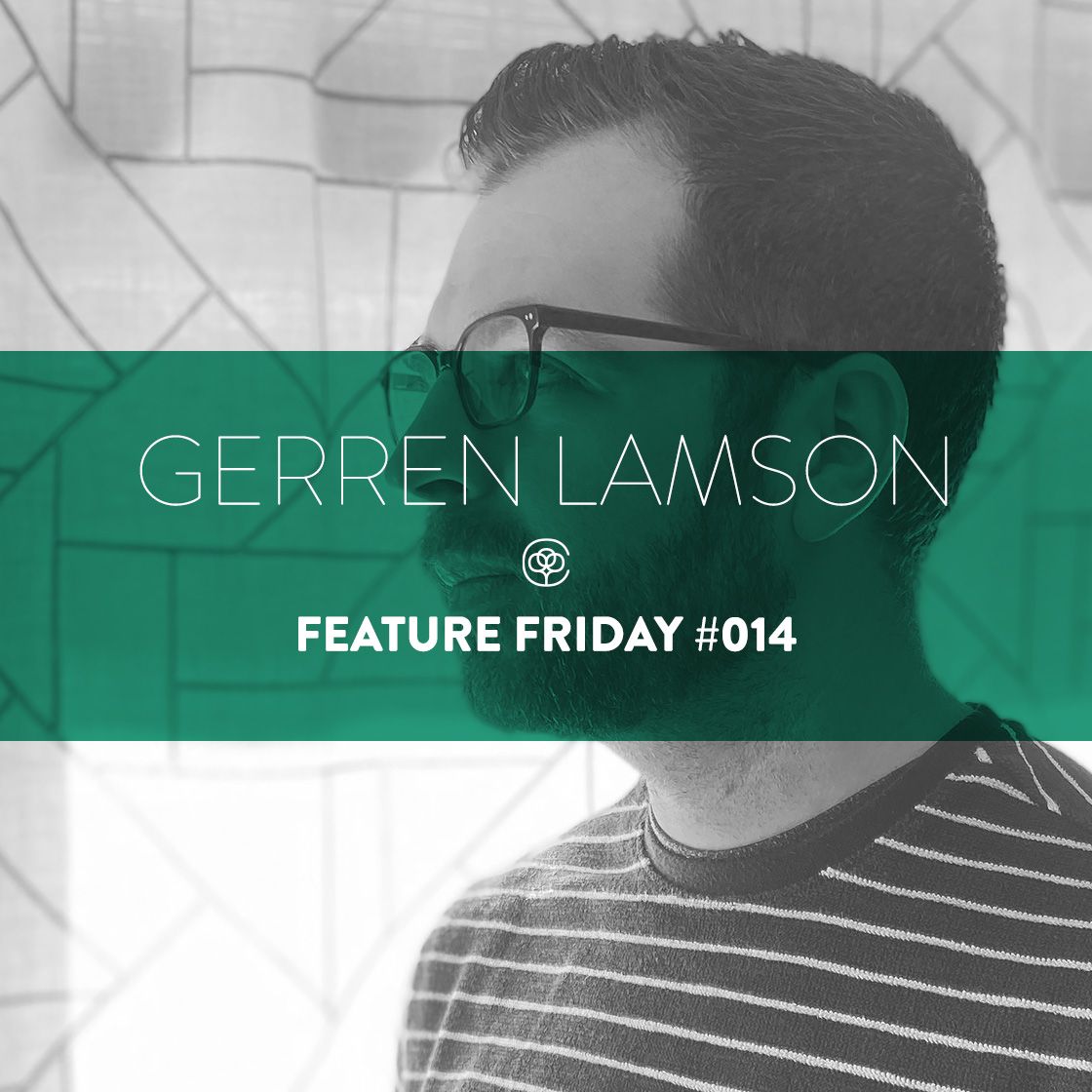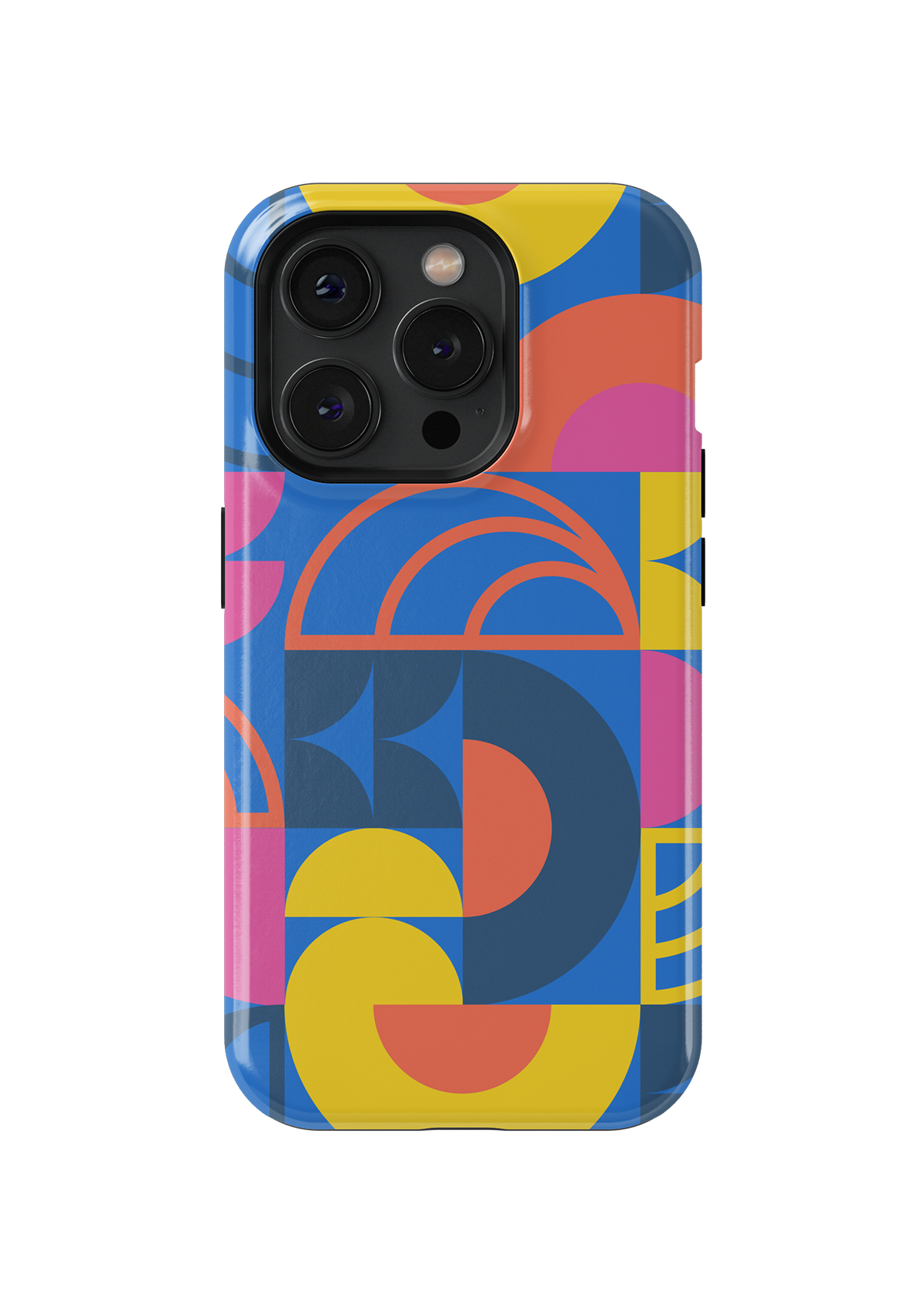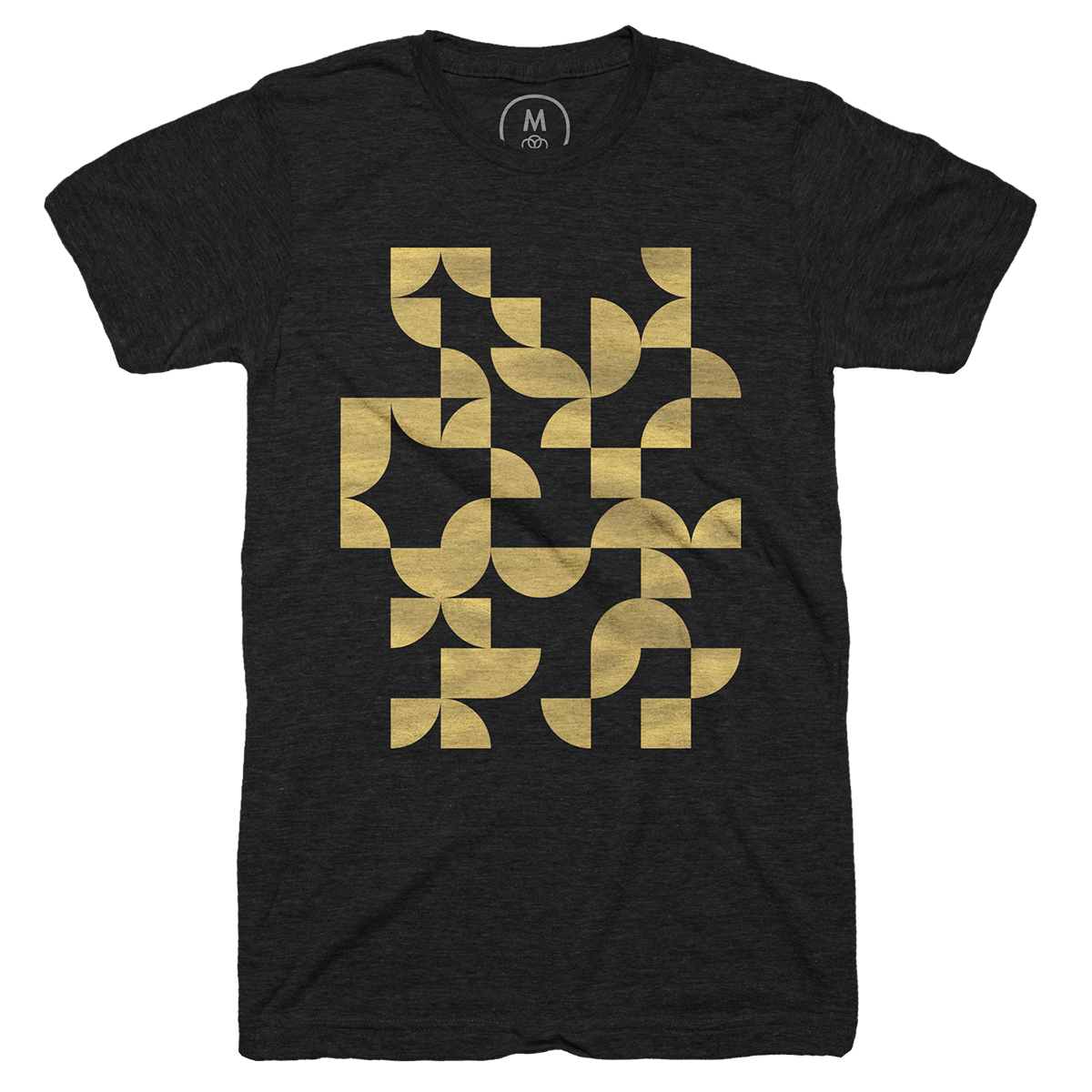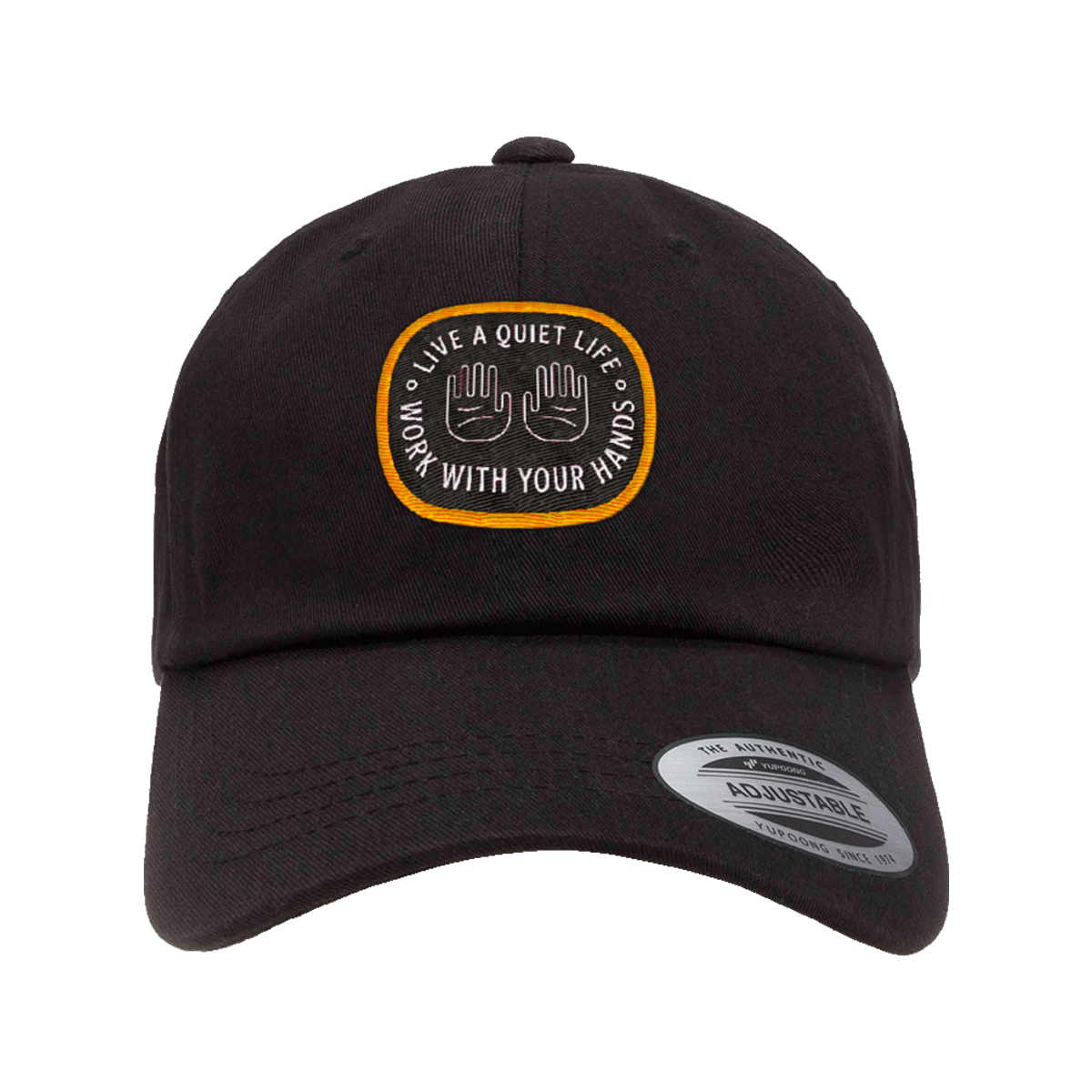Feature Friday #014 — Gerren Lamson

Feature Friday #014 is here, and it’s a throwback interview with our old friend Gerren Lamson. The best place to keep up with Gerren’s incredible output is his website. Shop his full catalog at Nosmal or his Cotton Bureau collection here.
Dude, I can’t believe it’s been 13+ years since we met at SXSW. Feels like (and is) a completely different world. Can you give us all just a super quick review on what you’re up to these days?
Yeah, it has been a long time! Last time we met I was close to wrapping up my time in digital marketing and advertising agencies before venturing into a tech startup called Creative Market which was acquired by Autodesk and then Dribbble in the last few years.
These days, I lead a talented UX team at Indeed consisting of UX designers, content designers, UX researchers, and UX developers. Our group works on the employer experiences side of the marketplace, and we support product experiences such as: Indeed Hire, Hiring Events, Indeed Recruiter Extension, Scheduling & Interviewing Platforms, Generative AI, and more.
Throughout that journey of learning how to grow an effective UX team and practice in different tech settings, I kept my creative hobbies alive with side projects.
Let’s talk about some of those side projects. You’ve got a UX newsletter, an active Medium publication, multiple musical albums, and hundreds of physical and digital products. We’re not as young as we used to be. I know I don’t get home from work these days excited to hop back on the computer to put in more hours. What makes you want to take on that additional load?
When you put it that way, it definitely doesn't make sense to work on computer-based side projects after a day job in tech. I don't recommend 12 hour days on a laptop. Let me provide some clarity.
My UX newsletter is a self-prescribed requirement for my job. I spend 1/8 of my time each week reading about changes to the UX industry of which there have been a lot lately. Then, I share the best of what I consumed with others with minimal effort. I haven't written about my experiences and perspectives as much as I'd like, but I've managed to publish 2 articles during my 5 year tenure at Indeed. Hopefully there will be more to come.
The technical nature of my day job leaves some creative itches to scratch. This is where I sometimes put an additional load on myself to invest in my music and visual art practices which have been going on since the early 2000s. For me, these art forms are like a meditative or therapeutic practice, so it doesn't feel like a heavy additional load if I have to spend some time digitizing my work.
There are recurring seasons such as summer and winter where I return to producing music and physical art organically. A lot of the time it starts with physical work such as noodling on the piano or sketching out some ideas. Then I translate it digitally during dedicated time on weekends or during the holidays. This approach takes longer than doing creative work full time, but I end up with a smaller body of work that I'm proud of over the years.

Got it. That completely makes sense. Still, that’s a tremendous amount of output and something to be proud of, particularly if it feels sustainable or even restorative for you. Since you mentioned work, let’s linger on that for a minute. What has the transition from designer to director been like for you?
That's a great question. Guiding the work of others rather than doing it myself wasn't natural at first. The transition took time.
I had two direct reports as a first time manager. There was a surplus of UX work so I continued pitching in as a designer as needed. The drawbacks of being in a "player/coach role" were that there was less focus on building good manager skills and contributing at the leadership level on strategy, staffing and other topics.
When the size of the UX team started to scale up, I had more time to focus on growing my management skills and impact at the leadership level. Over time, I got focused on supporting how the UX team could impact the strategy and initiatives at the ground and high levels of the organization. That became the most important work and I still really enjoy it to this day.
From conversations we had in person nearly 15 years ago, I could tell you had a strong analytical side which is not something you always see in designers. Has that been an asset for you as you lead teams?
Thanks for the kind words! I do think it has been an asset in my career.
I'm not a trained quantitative UX researcher, behavioral scientist, or data/product scientist, but I understand a lot of their work. I've pushed for closer collaboration with UX functions (design, content, research, etc). I've also dabbled with general analysis on customer sentiment and behavior data at the high-level and taskflow levels of the business for my own understanding. I leave the scientific analytical work to the professionals.
Being analytical with quant data and qual insights is an important skillset. I keep returning to prompting the UX team to think about how to leverage quant behavior data and qualitative insights to tell compelling stories focused on the most important customer behaviors. UX teams can tell more effective stories by pairing them with analysis and facts instead of just trying to influence with data analysis alone.

It’s definitely not uncommon to see people move from technical or design-focused roles and more into management as they move through their careers. Have their been any specific resources on the management or UX side that you would highlight for people who are trying to add those skills?
Absolutely. For those just starting out in UX management or looking to improve, I would recommend these:
- Making of a Manager
- Radical Candor
- Org Design for Design Orgs
- User Experience Management
- Move Fast and Fix Things
If someone is trying to improve their coaching of others or their own abilities, I would recommend the following short list for UX skills on the strategic side of the discipline.
- Jobs To Be Done
- User Story Mapping
- Conversational Design
- Strategic Content Design
- Storytelling for User Experience
- Designing Human-Centric AI Experiences
- This Is Service Design Doing
- The Path to Senior Designer
That’s a fantastic list. Radical Candor and Jobs to be Done are two of my personal favorites.
Before we wrap up, I have to ask the single question I’m most curious about in 2024. Where do you see tool-assisted design — specially AI generated — moving in the near future? As someone who has worked in the past for companies who provide marketplaces for buying and selling art, how concerned are you about the space?
Good question. I'll give my answer in 2 parts:
1) I think that policies (or the lack thereof) will be a driving force for adoption (or not) of AI tools that accelerate someone's ability to create production-ready designs/art. Users can pick up and use any AI tools, but it'll come down to the businesses that the users submit the art into being able to detect and allow (or not) AI-created work if it wasn't generated by their tool where they can control the inputs/IP into their AI models. A big factor here will be the risk tolerance for litigation and the level of control that organizations have over their creators' content generated and/or enhanced by AI. It'll be tough for companies to control users' behavior with AI, let alone detect where non-owned AI model capabilities are being used. So, policies will be the thing to watch. I assume Marketplaces will take a conservative approach.
2) From a design perspective, I think we'll continue to see a slow evolution and adoption of AI being used to generate and enhance design. Companies such as Adobe who can clearly demonstrate rights-free AI generated content from their models that were built by their owned IP will potentially give them an advantage. I think we'll see more current or new design-focused companies trying to tackle sub-problems in the market if the TAM is big enough, such as the following:
- Getting better at generating higher quality visuals that have tasteful intention and meaning behind them (esp in the context of the relevant culture(s) of the intended audience)
- Giving more fine-tuned controls to balance the design from a visual vs. mathematical perspective
- Improving automatic preparation for print-ready production such as outlining vector strokes/type, positioning layers, etc. for the intended print format
Let’s get out of here on a design note. You’ve got a deep catalog of products for Nosmal. Can you tell us a little bit more about the origin of that idea, where you see it going in the future, and maybe highlight a few products that you like best?



Sure! The name Nosmal is a fun play on my last name — Lamson spelled backwards. The origin of the project is that it is the latest evolution of the space I make for myself to experiment with visual design. To be honest, I'm not sure where it might go in the future. I'd like to think that my best work is yet to come.
In terms of my current products, I can share some highlights. I started playing with Bauhaus stylings which I quite enjoyed. Designs like Geometria I Gold and Geometria II Midday were like fun puzzles to arrange until they looked balanced. I was happy with how they translated to iPhone case designs too such as Geometria I Midday and Geometria II Sunrise.
A lot of my work starts with drawing, and I've always been interested in finding a way to bridge physical and digital art mediums. Some of my earliest pieces, Gaggle of Triangles and The Commander, were abstract drawings that were combined with a gradient which was inspired by my experience in screen printing the "rainbow roll" effective. Other times, I've got a more specific subject in mind such Ode to 512 and Maker's Heart I Gold.
Thank you so much for your time and insight, Gerren. Keep up the great work!
Thanks for having me!
